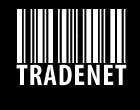BLOGSHARP: Cutting Edge Posts

The Indivisible
2007-03-08 10:33:40( Pharmeceutical-Medical )
Valence
Valency is the determined number of bonds that an atom of a specific element may form with other atoms (of the same element or no). Mostly, the valence description is a reference to the number of unpaired electrons on the atom. Atoms are unstable when these electron pairs are not complete, so that many "pure" elements are references to identical atoms which have paired together to complete those pairs.
The Single Atom
Monatomic atoms are then those atoms which require no valent bonds to be in their stable state. The substances most known for their independence from other elements are the noble gases: Helium, Neon, Argon, Krypton, Xenon, and Radon. These gases, in their pure form at standard temperature and pressure, exist as monatomic gas. (However, Xenon and Radon have been bonded successfully to other ionic materials at different pressures.) Further, other diatomic materials may be separated from their covalent bonds and will exist for limited time periods as monatomic particles when pressure is very low.
Univalence
Univalence refers to those elements or molecular ions with a valence of one. The most common of these is Hydrogen, which may therefore be considered monatomic. Monatomic structures have been used to formulate theories over the movement of single electrons in quantum mechanics.
Applications
Atomic force microscopes utilize a single atom as a probe. This probe is drawn over the surface or material. By noting the rises and falls of the probe with measuring lasers, scientists are able to get a profile of even lattice structures. The probe in an atomic force microscope may be made of silicon or silicone nitrate.
The atomic clock also utilizes the single ion of univalent molecules and atoms, particularly those of Mercury and Ytterbium. A radio wave is used to make the ion material emit light pulses. These pulses are counted and specific pulse numbers determine the seconds elapsed. (Atomic clock radios, atomic clock software and atomic wall clocks do not carry this technology; instead they receive the correct time by accessing a central server through radio for the accurate time.)
Mono atomic gold dust is a non-metallic form of gold where gold atoms take on one-dimensional or two-dimensional forms. This gold dust is known as a superconducting material and is commonly used in space applications. Mono atomic gold may be refined from volcanic soil and is said to have health properties when injected or ingested.
All rights Reserved © Tradenet Services srl
Do not duplicate or redistribute in any form.
Blog
Tags
- Arts (73)
- Automobiles (375)
- Beauty (46)
- Business (989)
- Careers (12)
- Charity (71)
- Computers (788)
- Dating (153)
- Education (333)
- Entertainment (257)
- Family (39)
- Financial (2171)
- Games-Toys (7)
- Garden (68)
- Health (439)
- Hobbies (102)
- Home (311)
- Insurance (662)
- Legal (562)
- Online Shopping (67)
- Pharmeceutical-Medical (393)
- Real Estate (263)
- Sports (48)
- Style-Fashion (4)
- Technology (238)
- Telephony (235)
- Travel (283)
- Web Hosting-SEO-Web Design (786)
Archivio
- 2007
- 2008
- 2009
Tradenet Services srl 02860350244 Via Marconi, 3 36015 Schio (VI) Italy
+39-0445-575870 +39-0445-575399